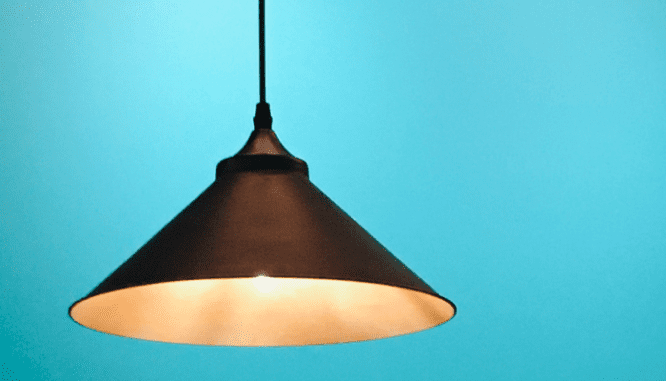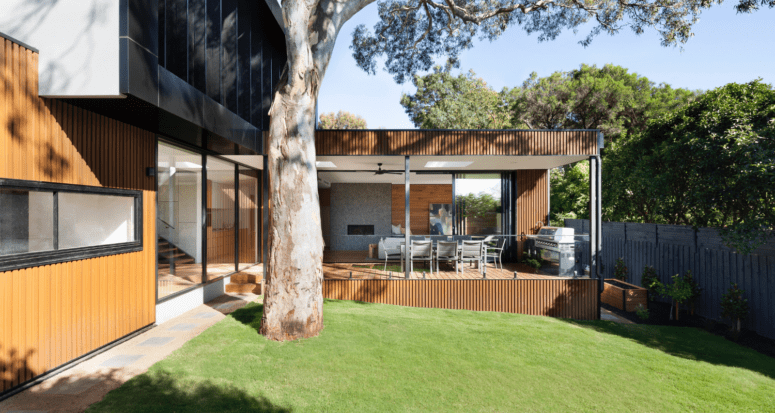Demystifying Contemporary and Modern House Design: How to Tell The Difference
- Published on
- 11 min read
-
 Karen LeBlanc, Contributing AuthorClose
Karen LeBlanc, Contributing AuthorClose Karen LeBlanc Contributing Author
Karen LeBlanc Contributing AuthorKaren LeBlanc is a professional journalist, lifestyle writer, and TV host. She is the design and travel editor of a national lifestyle publication, and a contributing writer for several regional and national magazines. She is the founder and primary writer of lifestyle blog www.TheDesignTourist.com and streaming series.
-
 Amber Taufen, Former Managing Editor, Buyer Resource CenterClose
Amber Taufen, Former Managing Editor, Buyer Resource CenterClose Amber Taufen Former Managing Editor, Buyer Resource Center
Amber Taufen Former Managing Editor, Buyer Resource CenterAmber was one of HomeLight’s Buyer Center editors and has been a real estate content expert since 2014. The former editor-in-chief at Inman, she was named a “Trendsetter” in the 2017 Swanepoel Power 200 list, which acknowledges “innovators, dealmakers, and movers-and-shakers who made a noteworthy impact over the last year” in real estate, and her assessment of revenue and expenses at the National Association of Realtors won a NAREE Gold Award for “Best Economic Analysis” in 2017.
Here’s a riddle for you: You walk through two houses, both with similarly streamlined exteriors and uncluttered interiors; however, one is more minimalist and stark, while the other shows similar restraint but mixed with color, texture, and today’s trends. What style would you call these two homes? Modern or contemporary?
In today’s housing market, builders, designers, clients, and homeowners use the terms “contemporary” and “modern” house design interchangeably. This terminology creates a conundrum because both “contemporary” and “modern” are highly subjective terms defining two difficult-to-pin-down styles.
We’re going to take a deep dive into the distinction between contemporary house design and modern style, with expert insight from designers and real estate agents who can help you define and decide if contemporary speaks to your taste and lifestyle.
“I do not think there is a difference between contemporary style and modern style. I think they are subjective. At its core, contemporary style is the fusion of interior and exterior design that flow together,” says Brandie Kittle, a top-selling real estate agent in Montana who sells 81% more single-family homes than the average agent in her area.
Kittle says that her clients often use the terms “contemporary” and “modern” to describe the same style.
“In Montana, the modern farmhouse style is popular, and people call it different names, including industrial farmhouse, modern cottage, and modern ranch,” she explains.
Kelly Sandidge, interior designer and owner of Hip Haven, a line of home decor products, notes that contemporary style is “always firmly planted in the present,” and it can incorporate new ideas and influences beyond the minimalist style of Modernism, “I think of it as a fusion of Modernism and the styles of the moment.”
“For me, Modernist design-proper more closely follows the principles that first defined it in the 20th century,” she adds. “It is not necessarily stark, since it can have bold pops of color and rich textures, but the lines and shapes are simple and uncluttered, with a less-is-more aesthetic.”
The widely published designer and artist differentiates Modernism as a movement in art, design, and culture, and the term contemporary as a certain style that can express Modernism ideals.
The consensus is that modern and contemporary design share certain characteristics — clean lines and streamlined, minimalistic looks. But the two terms diverge on the timeline.
“Modern design refers to a period of design that began after the Art Deco period and spanned the ’50s and ’60s, as we start to see more futuristic-looking designs in interiors and furniture,” explains Karin Dax, principal and design director of interiors at Aire + Partners. “Contemporary design is everything from that point on and is an incredibly broad description for a period of design.”
“Contemporary style is generally defined by simplicity, combining sleek lines with thoughtful details that accent a room’s aesthetic. Contemporary decor allows you to, essentially, pick and choose the best elements of other styles,” says Ashley Pontius, home decor expert with CanvasPrints.com.
Confused yet? To better understand the difference between contemporary versus modern home design, let’s break down their defining characteristics.
Contemporary homes merge form and function with a lot of natural light and open spaces that create a flow between the interior and exterior.
 Brandie Kittle Real Estate AgentClose
Brandie Kittle Real Estate AgentClose Brandie Kittle Real Estate Agent at Trailhead Realty Group Currently accepting new clients
Brandie Kittle Real Estate Agent at Trailhead Realty Group Currently accepting new clients
- Years of Experience 19
- Transactions 85
- Average Price Point $322k
- Single Family Homes 76
Elements of contemporary house design
Floorplans that flow
Floorplans that are light and bright and go with the flow define contemporary style. Fluidity is a primary characteristic of contemporary house design, manifesting as a flowing open floorplan that seamlessly integrates the indoors and the outdoors.
“Contemporary homes merge form and function with a lot of natural light and open spaces that create a flow between the interior and exterior,” notes Kittle.
Uncluttered and clean
Experts agree that the contemporary style is uncluttered and clean rather than overdone or embellished. The style looks easy, comfortable, and casual rather than contrived.
Contemporary spaces use simplicity as an opportunity to play with different decor accents that can be changed out over time. Open, uncluttered spaces make room to add personality and warmth to contemporary style.
“Contemporary decor allows you to pick and choose the best elements of other styles. You’re essentially painting on a white canvas to create a room you love. The best part is that if your style changes in a few years, you can just as easily change it up with different design elements,” explains Pontius.
Neutral color palettes
Contemporary house styles use neutral color palettes as backdrops to infuse color and personality through decorative accents and materials.
“The color palette tends to be gray, black, or white, with a layering of artwork and objects for pops of color,” notes Kittle.
“You’ll usually see a basic color palette of soft beiges and grays offset with pops of color in vibrant portraits and artwork or jewel-toned pillows. This balance ensures that even the simplest of rooms feel rich and inviting,” says Pontius.
Combination of textures and materials
The contemporary home draws warmth from an interplay of pattern, texture, and sensory-rich materials.
“I’m seeing a lot of steel, glass, concrete, and wood, especially in built-ins and beams in contemporary homes of my region,” says Kittle.
She notes an interesting trend in Montana where some builders incorporate steel cargo containers within the home structure. “These cargo containers are on each corner of the home and function as bedrooms,” she says.
Wood accents make a strong showing in contemporary house designs, typically mixed with neutral color palettes and pops of color to add personality to spaces.
“Contemporary style is by nature uncluttered, but more color, pattern, and texture are finding their way into the mix through things like wallpaper, flooring, textiles, and tile,” notes Sandidge.
Sloped roofs
The National Association of Homebuilders defines contemporary exteriors as having sloped roofs, clean lines, and expansive windows.
Inside, high ceilings, another defining feature, make rooms feel larger and brighter.
Midcentury modern influences
Contemporary style tends to embrace a bit of retro with midcentury modern influences and accents. Kittle notes that midcentury modern front doors are popular in contemporary house styles in Montana.
“The changes I see happening in contemporary design right now are making it look increasingly like midcentury modern design, my favorite style,” says Sandidge.
Style fusions
Many contemporary homes mix styles in a modern-day fusion of influences. Kittle sees influences from Scandinavian, Balinese, and Japanese styles in contemporary homes, with a concentration of natural elements such as wood and stone.
“If you are a fan of Mediterranean influences, you could bring this into your space with green plants and rich jewel-colored textiles,” says Pontius.

The evolution of modern design
In 1923, the first prototype of a modernist house, a spec home in today’s terms, took up residence in Weimar, Germany. Haus Am Horn was part of an exhibition by the Bauhaus, a revolutionary school of design that planted the seeds of present-day Modernism.
The cube-shaped, flat-topped structure, with strips of windows on the facade and inside rooms centered around a living room, became the prototype for no-frills, affordable, utilitarian housing fulfilling the needs of its occupants.
In the United States, modernist architects, including Frank Lloyd Wright, interpreted modernism in the signature Prairie style of low-slung homes that merged with the landscape. These homes were “contemporary,” reflecting people’s prevailing wants, needs, and desires; however, they were also “modern” because they embodied the latest building materials, technology, and mindset.
Modernism is a movement in art, design, and culture with origins in the Bauhaus school in Germany in the 1920s. The Bauhaus School promoted a mindset that form follows function and put forth the idea of the home as a machine for living, embracing the latest materials and technologies of the emerging industrial age.
World War Two catalyzed the spread of these ideals as many Bauhaus teachers and thinkers fled war-torn Europe for the United States and other parts of the world.
“In early and mid-20th century Modernism, design accents were not bland, but they were non-traditional and unfussy. They used the best of traditional materials and methods, combined with new materials and technologies, to create completely innovative architecture and interiors. This is what has made architecture and objects from the era so valuable today,” notes Sandidge.
Today, the Bauhaus ideals resonate in modernist architecture, with regional interpretations embodying local building materials, climates, landscapes, and prevailing architectural vernaculars.
The difference between modern and contemporary house design
“Modern style, despite the name, dates way back to the 1930s. This decor utilizes a simple, monochromatic palette, but there is almost zero decoration, unlike contemporary style. Contemporary spaces use simplicity as an opportunity to play with different fun decor, portraits, and other accents that can be changed out over time,” explains Pontius.
Today, “modern” style means a move toward minimalism, with simplified lines and abstract shapes and forms. A modern house design can carry the stereotype of sterile, white box structures. To debunk that myth, let’s break down some of the defining characteristics of a modern-styled home.

Elements of modern house design
Modern house design tends to use less of everything in terms of color, decor, and furnishings. The look is sleek and minimal, with a pared-down aesthetic.
Flat roofs
The National Association of Homebuilders describes the modern architectural style as having flat roofs with white-washed facades that tend to create low, horizontal lines with symmetrical elements.
Boxy elevations
Modern style architecture draws curb appeal from rectangular forms and boxed shapes of various heights and depths.
Monochromatic palette
Modern decor typically lacks color, skewing toward a more monochromatic palette.
Lack of adornment
Ornamentation and embellishments are absent in the decor of modern-styled homes. Spaces tend to look more austere, with sharper angles, geometry, and edges as opposed to the softer lines of contemporary decor.
Large glass windows
Natural light floods modern-styled homes from large expanses of glass. Large windows often dominate the facade and rear elevations of a modern-styled home.
Latest building materials
The latest building materials and technology advancements show up as honest expressions in a modern home. Envision steel columns and trusses, concrete blocks, and stained or exposed concrete floors.
Open floor plans
Main living spaces in a modern home, including the kitchen and dining areas, are not divided into rooms but rather flow in a shared space. These open floor plans foster a more casual and relaxed way of life.

Tips to update your living space to a contemporary style
It’s not the age or the architecture of a home that dictates contemporary style, but rather your approach. If you want to update your living space with contemporary elements, here are a few tips to make easy and affordable tweaks.
Above all, approach your update with simplicity. Remember that a clean and uncluttered space is the foundation of contemporary style.
Add pops of color
“Start with neutral finishes and furniture, and add pops of color with accent pieces, including throws, pillows, and accessories,” says Dax.
Experts advise strategically selecting artwork as the basis for pulling in accent colors.
“Pick a wonderful photo with rich colors that you love. Then use colors that stand out in that portrait — rich blues or pinks, for example — to bring other accent pieces into your space,” explains Pontius.
“Think of a bedroom designed with soft colors and very little clutter that is defined by a beautiful portrait canvas above the bed.”
Update kitchen cabinets and counters
Updating your kitchen surfaces to reflect the latest looks can include painting cabinets a trending color or replacing outdated cabinet materials and styles with contemporary styles, such as slab or shaker cabinet doors.
Backsplashes and countertops offer an opportunity to bring in the latest materials, such as engineered stone, concrete, or metals.
Replace older appliances
Appliances can make a design statement and serve practical purposes in your kitchen. Consider replacing outdated appliances with new styles in the latest looks and finishes, such as matte black, stainless steel, or a bright, bold color.
Update lighting fixtures and plumbing fittings
Lighting fixtures and plumbing fittings can work as the jewelry in a room. Updating your fixtures and fittings can be as simple as replacing bulbs with industrial filament bulbs, installing a new statement-making chandelier, or adding floor and table lamps in trending designs.
Faucets in outdated finishes and styles could also use a makeover, with new silhouettes and finishes, such as matte black, brushed gold, or brass.
Resurface walls and ceilings
Rather than painting over wood paneling, consider removing it entirely, replacing it with sheetrock. “Absolutely save the mahogany, but it’s not the end of the world if some of that late ’70s composite wood paneling goes away,” says Sandidge.
Popcorn ceilings also date a home, so consider removing the texture for a more sleek, smooth finish.
Harmonize traditional elements with current trends
In older or more traditional-styled homes, experts advise harmonizing some of the original features and architectural details to blend with contemporary elements.
“Downplay original built-ins and traditional architectural details with neutral paint, minimal window coverings, light fixtures, and floor treatments like wood, cork, concrete or tile in place of carpeting,” suggests Sandidge.
She advises homeowners to rebuild or replace only the details that make the house less comfortable or functional. Whenever possible, make the changes subtle enough that they almost could be original details.
The takeaway
Contemporary house design is a dynamic style that changes with the latest materials, mood, and trends. It’s a fluid style that empowers you to be creative, express your personality, and make your home more comfortable.
If contemporary style speaks to you, and you’re ready to buy a house, our network of real estate agents can help you find the perfect contemporary home in your area.
Header Image Source: (R ARCHITECTURE / Unsplash)
